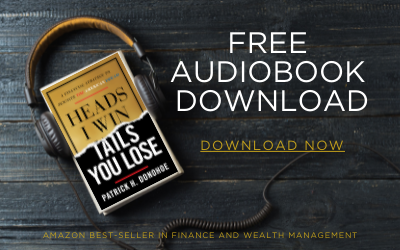In a world of market volatility, global uncertainty, and unpredictable economic cycles, investors are realizing that growth alone isn’t enough. True financial strength comes from resilience—and that’s where non-correlated assets come in.
Non-correlated assets are investments that don’t move in sync with the stock market or other traditional asset classes. When equities drop, these assets may hold their value—or even rise. And when integrated into a broader portfolio, they serve as a stabilizing force, reducing volatility while preserving opportunity.
This guide will explore what non-correlated assets are, why they matter, and how they can support a more stable, predictable path to long-term wealth. From Whole Life Insurance and real estate to gold, private lending, and beyond, you’ll learn how to evaluate, allocate, and optimize these powerful tools.
What this means for you is the ability to build a portfolio that performs in any market—without sacrificing liquidity, legacy, or peace of mind.
What Are Non-Correlated Assets?

At the core of every smart investment strategy is a concept that’s often overlooked: correlation. It’s not just about what you own—it’s about how your assets behave in relation to one another. And when markets move unpredictably, that relationship matters more than ever.
What Is Correlation?
Correlation measures how two asset classes move in relation to one another:
- Positive correlation: Both assets tend to move in the same direction (e.g., many stocks and ETFs)
- Negative correlation: One asset tends to rise when the other falls (e.g., stocks vs. certain bonds or gold)
- Non-correlation: The movement of one asset has little or no consistent relationship to the other
What Are Non-Correlated Assets?
Non-correlated assets are investments whose performance is not directly tied to traditional market trends. This means they can maintain or increase in value even when the broader market is down, acting as a buffer during volatility.
Examples include:
- Whole Life Insurance cash value
- Real estate (especially income-generating)
- Gold and other precious metals
- Private debt instruments
- Commodities or alternative assets
Correlated vs. Non-Correlated Assets – Why It Matters
When your portfolio is made up of assets that all move together, it’s vulnerable to broad downturns. But if you include non-correlated asset classes, you add resilience:
- Reduced portfolio volatility
- More consistent performance across cycles
- Greater protection during recessions or market crashes
Diversification isn’t just about owning different things—it’s about owning assets that behave differently.
Why Non-Correlated Assets Matter in Today’s Market
Market volatility isn’t just a risk—it’s a reality. And in today’s interconnected global economy, traditional diversification isn’t always enough. That’s why non-correlated assets play such a critical role in a smart, resilient portfolio.
Volatility Is the New Normal
From inflation spikes and interest rate swings to geopolitical tensions and tech-driven market shocks, the past few years have shown just how quickly financial markets can change. Investors who rely solely on stocks, bonds, and mutual funds often find themselves exposed—without a plan B.
Key Benefits of Non-Correlated Assets
1. Reduced Portfolio Volatility
Non-correlated assets move independently of mainstream markets. When traditional investments drop, these assets may hold steady—smoothing your returns and limiting drawdowns.
2. Preserved Capital in Downturns
While correlated assets tend to fall together during crises, non-correlated assets offer a potential hedge—protecting wealth when other holdings lose value.
3. Improved Risk-Adjusted Returns
By reducing sharp swings in portfolio performance, non-correlated assets often help you earn more consistent returns with less emotional stress and decision fatigue.
4. More Strategic Flexibility
Having a portion of your wealth in non-correlated assets—especially liquid ones like Whole Life Insurance cash value—gives you the power to act when others can’t, funding opportunities or emergencies without disrupting your long-term plan.
Who Benefits Most from Non-Correlated Assets?
- Retirees or near-retirees who can’t afford major losses
- Business owners who need stable capital buffers
- Legacy-minded families focused on asset protection and generational planning
- Investors with concentrated exposure to equities or real estate
The goal isn’t just to grow wealth—it’s to keep it. And non-correlated assets make that possible, regardless of what the market does next.
Best Non-Correlated Assets to Consider

Choosing the right non-correlated assets isn’t about abandoning growth—it’s about adding protection, liquidity, and consistency to your portfolio. The best non-correlated assets offer stability when markets are unstable and create a foundation for long-term wealth.
Here are some of the most effective non-correlated asset classes to consider:
1. Whole Life Insurance (Cash Value Focused)
Why it’s powerful:
- Grows with guaranteed interest and potential dividends
- Unaffected by stock market swings
- Provides tax-free access to capital via policy loans
- Integrates seamlessly with retirement, estate, and liquidity planning
Whole Life Insurance is not just protection—it’s a stable, contractually guaranteed asset that grows in all seasons.
2. Cash-Flowing Real Estate
Why it’s powerful:
- Income-producing properties often behave independently of stock market cycles
- Physical asset backed by demand for housing, business, or storage
- Real estate often maintains or gains value during inflationary periods
Real estate provides both income and equity growth, with low-to-moderate correlation to equities.
3. Gold and Precious Metals
Why it’s powerful:
- Historically acts as a hedge during inflation or currency weakness
- Non-yielding but stable store of value
- Often moves counter to equities or fiat-based assets
Gold doesn’t produce income—but it protects purchasing power and anchors portfolios in times of uncertainty.
4. Private Lending and Structured Notes
Why it’s powerful:
- Offers fixed income unrelated to public market performance
- Customizable terms, risk levels, and asset backing
- Typically non-traded and non-correlated by design
When structured well, these tools offer stability and predictable returns.
5. Alternative Investments
Includes:
- Commodities
- Infrastructure
- Life settlements
- Collectibles or non-public assets
Why they matter:
- Often uncorrelated to major indices
- Provide access to niche markets with lower volatility
- Best for experienced investors with clear risk awareness
Comparison Snapshot: Correlation by Asset Class
| Asset Class | Typical Correlation to Stocks |
| U.S. Equities | High |
| Bonds | Moderate |
| Whole Life Insurance | None |
| Real Estate | Low to moderate |
| Gold | Negative to low |
| Private Lending | Low |
Life Insurance as a Non-Correlated Asset
When most people think of life insurance, they think of protection—not performance. But for strategic investors, Whole Life Insurance serves a dual role: guaranteed protection and a non-correlated, cash-building asset that strengthens overall portfolio stability.
Why Life Insurance Qualifies as a Non-Correlated Asset
Unlike stocks, bonds, or real estate, the cash value of a Whole Life Insurance policy is:
- Not tied to market volatility
- Backed by the financial strength of a mutual insurance company
- Contractually guaranteed to grow year over year
- Able to earn dividends, even in down markets (when issued by a participating company)
This makes it a stable asset class that provides liquidity, certainty, and balance in any economic environment.
Strategic Benefits of Whole Life as a Non-Correlated Asset
1. Guaranteed Growth and Safety
- Cash value grows predictably, even when markets fall
- Offers downside protection with no market loss risk
- Ideal for conservative investors or legacy-focused planning
2. Liquidity Without Market Timing
- Policy loans allow you to access cash without selling other assets
- Funds are available without tax events or early withdrawal penalties
- Provides investment capital during downturns or emergencies
3. Legacy and Tax Efficiency
- The death benefit passes to heirs tax-free
- Can be used to equalize estates, fund trusts, or replace lost assets
- Integrates easily into estate and charitable planning
4. Behavioral Advantage
- Encourages disciplined saving
- Offers peace of mind—so you’re less likely to panic-sell other assets
- Becomes a private, reliable financial reserve
Using Whole Life to Support Your Broader Strategy
When integrated into your wealth-building plan, Whole Life Insurance can:
- Serve as your Tier 1 liquidity layer
- Free up riskier assets to grow over time
- Provide capital for debt repayment, real estate, or opportunity funding
- Act as the core of a Family Bank or intergenerational wealth system
Think of it not just as insurance—but as your personal reserve account that grows in all conditions.
Portfolio Diversification Strategies Using Non-Correlated Assets

Diversification is one of the oldest principles in investing—but in a modern, unpredictable market, it’s no longer enough to simply spread money across stocks and bonds. True diversification comes from including non-correlated assets that behave differently from traditional markets, especially during times of stress.
What Diversification Really Means
Diversification is not just variety—it’s about reducing overall risk without compromising growth. A diversified portfolio should:
- Smooth out volatility
- Preserve capital in downturns
- Offer multiple income and growth streams
- Maintain liquidity and flexibility
Non-correlated assets serve as a foundation of that strategy.
Key Principles for Diversifying with Non-Correlated Assets
1. Layer Your Portfolio
Use a tiered approach to structure your assets:
- Tier 1 (Stability & Liquidity):
- Whole Life Insurance cash value
- Cash reserves
- Short-term notes or low-volatility alternatives
- Whole Life Insurance cash value
- Tier 2 (Growth & Income):
- Real estate
- Dividend-paying equities
- Private lending or income funds
- Real estate
- Tier 3 (Opportunity & Leverage):
- Alternative investments
- Business equity
- High-growth speculative assets
- Alternative investments
Each layer serves a unique function in supporting short-, mid-, and long-term goals.
2. Blend Risk Profiles Intentionally
Combine:
- Low-correlation, stable assets (like Whole Life and gold)
- Growth-focused assets with moderate correlation (like real estate)
- Non-traditional or niche holdings for additional diversification
This blend minimizes downside risk while capturing upside potential.
3. Rebalance Regularly
Markets shift. Your strategy should, too.
- Adjust allocations based on your current life stage (accumulation, preservation, legacy)
- Rebalance to maintain your intended risk exposure
- Use tax-efficient tools like policy loans to reposition without triggering capital gains
4. Use Insurance as a Risk Anchor
Whole Life Insurance can serve as a central stabilizing asset—allowing you to:
- Take calculated risks elsewhere
- Avoid panic selling during downturns
- Maintain financial continuity across generations
Insurance isn’t just defense—it’s a powerful platform for sustainable growth.
How to Find and Evaluate Non-Correlated Assets
Not all diversification is created equal. Just because an asset looks different doesn’t mean it behaves differently. To truly reduce risk and increase resilience, you need to intentionally select assets that have low or no correlation to the rest of your portfolio.
Here’s how to find and evaluate non-correlated assets with confidence.
1. Understand True Asset Behavior
Before you invest in something marketed as “diversified,” ask:
How did this asset perform during past market downturns?
Look for investments that:
- Held their value during stock market corrections
- Provided liquidity or access to capital when others locked up
- Delivered consistent returns regardless of equity performance
2. Use Correlation Tools and Resources
There are many tools and platforms that offer correlation matrices—comparing how asset classes have moved relative to each other over time. Look for:
- 5-year and 10-year rolling correlation averages
- Historical performance during bear markets
- Data from independent financial research platforms (e.g., Morningstar, Portfolio Visualizer)
3. Vet the Asset’s Fundamentals
For each potential non-correlated asset, evaluate:
- Liquidity: How easily can you access the capital when needed?
- Transparency: Do you understand the underlying mechanics and risks?
- Return Profile: Is the return steady, or highly speculative?
- Use Case: Does it serve a purpose in your portfolio—income, protection, growth, or legacy?
An asset that behaves differently isn’t enough—it must also align with your broader strategy.
4. Identify Reliable Non-Correlated Categories
Focus your research on proven, historically non-correlated options:
- Whole Life Insurance (guaranteed growth, private access to capital)
- Private credit and lending strategies
- Commodities and hard assets (e.g., gold)
- Certain types of real estate (not REITs tied to public markets)
- Structured notes or contractual return vehicles
5. Work With a Strategist
Finding non-correlated assets is easier—and safer—with expert support.
A Paradigm Life Wealth Strategist can:
- Assess your current asset correlation exposure
- Identify appropriate alternatives based on your goals
- Integrate tax, liquidity, and legacy into the decision-making process
- Help structure the right timing and funding strategy (e.g., via policy loans)
Optimizing Your Portfolio With Non-Correlated Assets
Once you’ve identified which non-correlated assets make sense for you, the next step is portfolio optimization—the art and science of blending assets to enhance performance while managing risk.
The goal isn’t just higher returns—it’s a smoother, more strategic financial journey.
Many portfolios appear diversified but are heavily weighted toward correlated assets, such as stocks and mutual funds that move in tandem during market swings. This leaves investors exposed.
Optimization introduces intentional diversification—minimizing overlap in behavior and maximizing stability across economic cycles.
Steps to Optimize With Non-Correlated Assets
1. Evaluate Current Correlation Exposure
- Use tools to determine how much of your portfolio is moving together
- Identify “silent risks” in seemingly diverse investments
- Flag concentrated positions in equities or bonds
2. Set Clear Objectives
Your goals determine your ideal allocation mix:
- Income generation
- Long-term growth
- Liquidity and access
- Legacy and wealth transfer
The right balance of correlated and non-correlated assets depends on your timeline and tolerance for volatility.
3. Create a Customized Asset Mix
Structure your portfolio around purpose-driven layers:
- Stability Layer: Whole Life Insurance, high-grade private credit
- Growth Layer: Real estate, equities, business equity
- Hedge Layer: Gold, commodities, negatively correlated assets
- Liquidity Layer: Insurance loans, short-term reserves
Each layer supports the next, creating financial momentum without fragility.
How to Minimize Asset Class Non-Correlation Risk
Even non-correlated assets carry risk if misused. Key ways to manage that risk:
- Avoid overconcentration in a single alternative class
- Understand liquidity restrictions and lockup periods
- Reassess correlations annually—market relationships shift over time
- Integrate assets that have both performance stability and utility (like Whole Life Insurance)
Why Whole Life Insurance Strengthens Optimization
Whole Life Insurance supports optimization by:
- Offering stable, compounding returns with no market exposure
- Serving as a borrowing base without selling other investments
- Providing liquidity, protection, and tax efficiency—all in one asset
It works not just as an asset—but as a strategic bridge that supports portfolio flexibility and long-term planning.
FAQs about Non-Correlated Assets
What are the most uncorrelated assets?
Assets with little to no relationship to stock or bond markets include:
- Whole Life Insurance cash value
- Private credit or lending instruments
- Precious metals (especially gold)
- Certain types of real estate (like small multifamily or agricultural property)
- Commodities and infrastructure funds
These provide value and stability even during market volatility, making them excellent diversification tools.
What assets have a low correlation?
Low-correlation assets move differently than traditional equities, though not always inversely. Examples include:
- Real estate (non-REIT, cash-flowing properties)
- Structured notes or alternative income products
- Long-duration Whole Life Insurance
Diversified international investments (selectively)
These can reduce risk while keeping your portfolio positioned for consistent returns.
What are negatively correlated assets?
These assets typically move in the opposite direction of stocks. When the market drops, negatively correlated assets may rise or hold firm. Examples include:
- U.S. Treasury bonds (especially during equity downturns)
- Gold during economic stress or currency declines
- Some hedge funds or volatility-targeted investments
While useful, negatively correlated assets tend to be fewer and should be balanced with stable, non-correlated positions like Whole Life Insurance.
Build a Portfolio That Thrives in Every Season
In a world where markets move fast—and unpredictably—building wealth requires more than just chasing returns. It demands a strategy grounded in resilience, liquidity, and long-term control. That’s exactly what non-correlated assets offer.
From Whole Life Insurance and real estate to gold and private credit, non-correlated assets allow you to design a portfolio that doesn’t just ride the market—it withstands it, adapts to it, and creates peace of mind through every cycle.
You now understand how these assets:
- Reduce volatility and risk
- Protect capital during downturns
- Support consistent, compounding growth
- Help you build and preserve wealth for generations
Your Next Step: Build with Confidence, Not Guesswork
The right non-correlated assets—and the right structure—depend on your specific goals. A Paradigm Life Wealth Strategist can help you:
- Analyze your current asset correlation
- Identify stable, tax-advantaged, and income-producing alternatives
- Integrate Whole Life Insurance for liquidity, legacy, and stability
- Design a personalized wealth system that thrives through change
Your financial future doesn’t have to depend on the market. Let’s build something stronger.
Schedule your free strategy session today.







